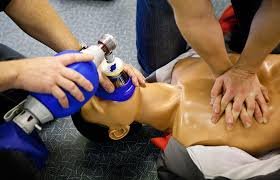The Digital Lifeline: When Seconds Count and Shopping Saves Lives

At 2:47 AM on a Tuesday, a small hospital in rural France faces a crisis. Their last bottle of specialized skin preparation gel runs empty just as an emergency neurological procedure begins. In the old days, this would mean frantic phone calls, delayed surgeries, and potentially compromised patient outcomes. Today, a few clicks on a hospital supplies online platform can have critical supplies delivered within hours. This is more than convenience; it’s the difference between life and death in modern healthcare’s digital age.
When Digital Shopping Becomes an Emergency Response
Emergency medicine doesn’t follow business hours, and neither do supply shortages. When critical medical supplies run low during off-hours, traditional procurement systems fail healthcare providers. The emergence of 24/7 digital platforms has transformed supply chain management from an administrative burden to an emergency response tool. A competent hospital supplies online service operates like an always-open pharmacy for medical facilities, it’s just clicks away, regardless of time or circumstance.
This round-the-clock availability represents more than operational convenience. It embodies a fundamental shift in healthcare philosophy, from scarcity management to abundance assurance. Healthcare providers no longer need to maintain massive inventories of every possible supply; they need reliable access to comprehensive catalogs available instantly.
Small Supplies with Big Impact
Medical procedures often depend on seemingly insignificant supplies that most people never notice. Products like Nuprep skin preparation gel might appear trivial compared to surgical instruments or monitoring equipment, but they play crucial roles in diagnostic accuracy and patient safety. When these essential consumables aren’t available, entire procedures can be compromised or postponed, affecting patient outcomes in ways that ripple through entire healthcare systems.
The digitization of medical supply procurement ensures that these critical small items receive the same priority as major equipment purchases. Online catalogs don’t distinguish between expensive machines and inexpensive consumables, they treat every item as potentially essential to patient care.
Direct Access Revolution
Traditional medical supply chains involved multiple intermediaries, each adding costs and delays while reducing transparency. Healthcare facilities often waited weeks for quotes, navigated complex approval processes, and paid inflated prices for basic supplies. The rise of digital procurement platforms has disrupted this inefficient system by connecting healthcare providers directly with manufacturers and distributors.
When healthcare facilities work with an online platform, they gain access to competitive pricing, detailed product information, and streamlined ordering processes that eliminate traditional procurement bottlenecks. It reduces costs while improving service quality, allowing healthcare facilities to allocate more resources toward patient care rather than administrative overhead.
Smart Shopping for Smarter Healthcare
Digital procurement platforms generate valuable data that helps healthcare facilities optimize their supply management strategies. Purchase history analysis reveals consumption patterns, identifies cost-saving opportunities, and predicts future supply needs with remarkable accuracy. It transforms supply management from reactive scrambling to proactive planning.
Advanced hospital supplies online systems use artificial intelligence to suggest reorder points, recommend alternative products, and alert facilities to potential supply shortages before they occur. It prevents emergency shortages while optimizing inventory levels to reduce waste and storage costs.
Rural Access to Urban Resources
Geographic location once determined healthcare facility capabilities. Rural hospitals struggled with limited access to specialized suppliers, while urban medical centers enjoyed abundant vendor relationships and rapid delivery options. Digital procurement platforms have eliminated these geographic disadvantages by providing equal access to comprehensive medical supply catalogs regardless of location.
A small clinic in rural France can now access the same suppliers, pricing, and product selection as major Parisian hospitals. It improves healthcare equity by ensuring that patient care quality isn’t determined by postal codes or proximity to major medical suppliers.
See also: White-Label & Turnkey Precision Health Platforms for Health Systems
Innovation Partnership: CNSAC’s Digital Evolution
Forward-thinking companies like CNSAC understand that manufacturing excellence must be paired with distribution innovation. Their specialization in sleep diagnostics, neurophysiology, cardiology, and oxygen delivery creates comprehensive product lines that benefit from digital distribution strategies. By partnering with modern hospital supplies online platforms, healthcare facilities can access their innovative medical devices through convenient, reliable digital channels.
This integration of manufacturing expertise with digital distribution represents the future of medical equipment access, where innovation reaches healthcare providers through seamless, efficient procurement systems that prioritize both product quality and service excellence.
Conclusion
The digital transformation of medical supply procurement represents more than technological advancement, it embodies healthcare’s evolution toward efficiency, accessibility, and reliability. Online platforms have become an essential infrastructure for modern healthcare delivery, ensuring that critical supplies are available when and where they’re needed most. This digital lifeline connects healthcare providers with the resources necessary for excellent patient care, proving that sometimes the most important medical innovations happen not in operating rooms or laboratories, but in the digital systems that keep healthcare facilities supplied, prepared, and ready to save lives.




